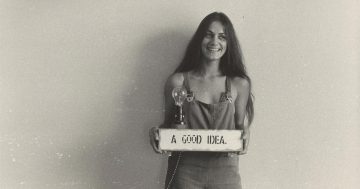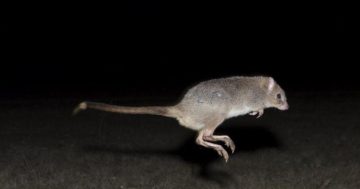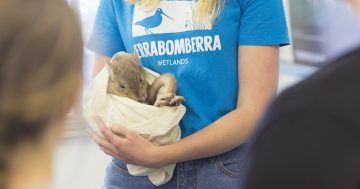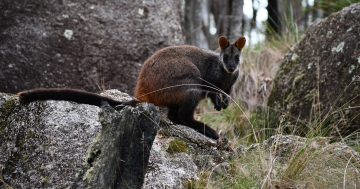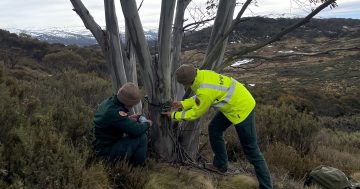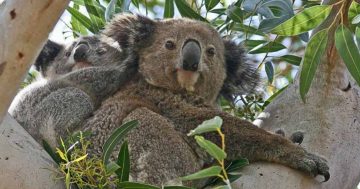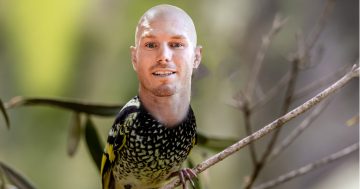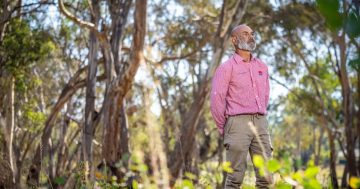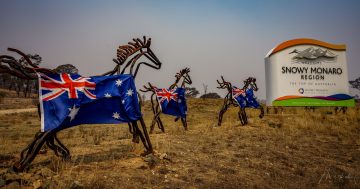
Dr Arianne Lowe prepares to sedate an eastern bettong with the help of Captain Zoe Griffyn prior to their flight to Victoria. Photo: Supplied, ADF.
A rescue mission involving threatened wildlife species in the Tidbinbilla Nature Reserve has taken place to ensure their ongoing safety.
Animals have largely been the forgotten parts of the bushfire emergencies in our region, however the rescue last week saw 26 endangered eastern bettongs relocated from the Tidbinbilla Nature Reserve to secure facilities at Mt Rothwell in Victoria.
The eastern bettongs, which are part of Tidbinbilla’s threatened species recovery program, were evacuated by Australian Defence Force aircraft to escape the Orroral Valley fire, which continues to travel towards Tidbinbilla.
Staff from ACT Parks and Conservation were also involved.

Royal Australian Air Force and Emergency Services Agency personnel assist with the relocation of threatened wildlife. Photo: Michelle Kroll, Region Media.
Efforts are also being made to safeguard other animals in Tidbinbilla’s threatened species recovery program.
Two critically endangered southern brush-tailed rock wallabies and two yellow-footed rock wallabies, which require ongoing care, have been transferred to Taronga Zoo. More brush-tailed rock wallabies will be relocated from Tidbinbilla to Mt Rothwell by ADF aircraft.
A small population of critical-breeding Northern Corroboree frogs and Tidbinbilla’s captive koalas have also been transferred to purpose-built facilities at the Australian National University. This follows the successful relocation of seven platypus from Tidbinbilla Nature Reserve to Taronga Zoo at the end of December.
The rescue comes as Australian Academy of Science Fellow Professor Chris Dickman estimated that Australia has lost at least a billion birds, mammals and reptiles this bushfire season. This figure does not include insects, bats, fish and frogs.
Minister for the Environment and Heritage Mick Gentleman said suitable habitat and expert care were critical factors in deciding to move all animals away from Tidbinbilla. Animals will remain at their relocated facilities until conditions allow their safe return.
“Bushfire preparations are now being undertaken at Tidbinbilla to make the area safer for remaining animals,” Mr Gentleman said.
“This includes fuel reduction burns, installation of containment lines, removal of vegetation around key enclosures and the installation of sprinkler systems in holding areas.
“I extend a heartfelt thank you to everyone who has helped to successfully relocate Tidbinbilla’s threatened animals and the Australian Defence Force personnel who helped to enable the operations. I look forward to their safe return to the nature reserve.”
Eastern bettongs at Tidbinbilla are part of efforts to re-establish populations on mainland Australia. They were brought to the ACT from wild populations in Tasmania in 2011, ending more than a century of the species’ extinction from the Canberra region.
Koalas displaced and injured by Australia’s bushfire crisis are also being cared for and housed temporarily at the Australian National University.
Three of the Snowy Mountain koalas have been named after the American aerial firefighters tragically killed in the air-tanker crash in southeast NSW last week.
ANU researcher Dr Karen Ford, who is an expert in koala nutrition, is running the “5-star koala hotel” on campus in Canberra.
“We have 11 koalas at ANU that have come in from the various fire grounds in the region,” said Dr Ford.
“They just keep arriving. There is nowhere else that has the facilities to hold these animals or this many at the moment.
“There are a couple with burn injuries and the rest have come from completely burnt habitat and they are quite skinny.”

ANU is providing a safe haven for displaced and injured koalas. Photo: ANU.
Dr Ford says the koalas will stay in their purpose-built koala pens for a few weeks and it is hoped they can be returned to the wild.
“These injured animals have been very stressed. They have gone through a bushfire but they are doing well. They are eating well and have calmed down a lot,” Dr Ford said.
“We have reunited a mother and joey. We have three koalas named after the victims of the recent, tragic air tanker crash northeast of Cooma – Ian, Paul and Rick.”
The researcher has warned people not to catch, feed, water or care for koalas but contact local wildlife agencies if they have concerns or come into contact with them.
“You need to know something about koalas to feed them, otherwise you can unintentionally starve them,” said Dr Ford.
“Koalas also don’t drink a lot of water and if a koala takes water they may be stressed. If you are not aware of their habits you might not even realise that you are not feeding them appropriately.”
Dr Ford has been working alongside local wildlife agencies to receive the koalas, including the Two Thumbs Wildlife Trust, which named the koalas honouring the Coulson Aviation crash victims.
“We have a long-running relationship with Two Thumbs Wildlife Trust Koala Sanctuary and ordinarily they would have gone there but it was burnt down in the fires,” Dr Ford said.
“I am really pleased we can help these koalas otherwise I don’t know where they would have gone.”











